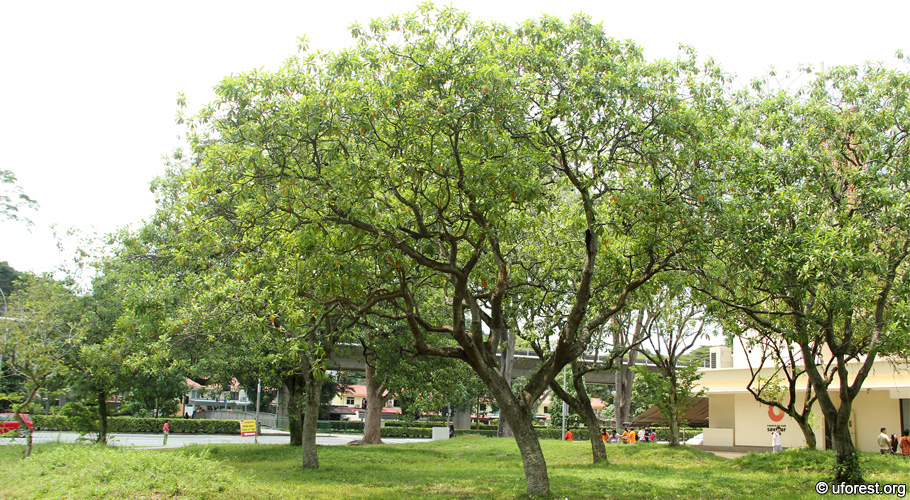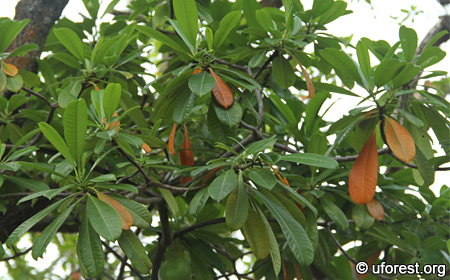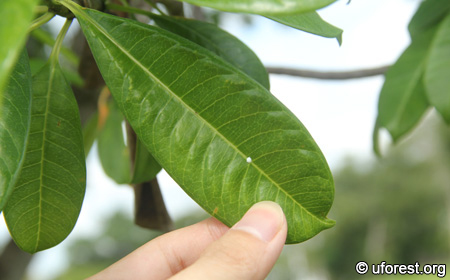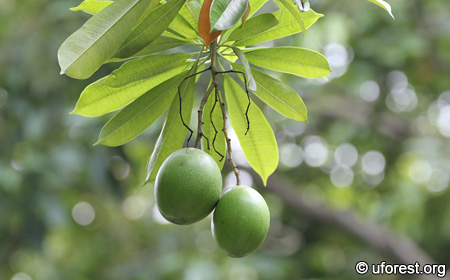| Etymology | Genus | Cerberus, the three-headed dog in Greek mythology |
|---|---|---|
| Species | Indian common name for this species | |
| Family | Apocynaceae | |
| Synonyms | Cerbera dilatata Markgr., Cerbera forsteri Seem., Cerbera lactaria Buch.-Ham. ex Spreng. | |
| Common Names | Pong Pong, Sea Apple | |
| Status | Native: Vulnerable | |
| Form | Tree | |
| Native Distribution | India, Peninsular Malaysia, Singapore, Sumatra | |
Diagnostics:
Cerbera odollam is a cultivated tree also found in our coastal forests and mangroves. It has distinctive foliage because of the spirally arranged leaves. The leaves are narrowly obovate with a small drip tip. A helpful character which is almost always present is the dry brown leaves on the tree.
Its other congener, Cerbera manghas can only be differentiated from C. odollam by the flowers, with C. manghas having a red centre.
Interesting Facts:
The Pong Pong was once commonly planted in Singapore during the initial stages of the country's tree planting campaign (Wee, 2003). In 1988, it was ranked as the 11th most abundant cultivated tree in Singapore with 9,959 individuals (The Straits Times, 1988). However, it is now being phased out due to its aggressive roots and large falling fruits (NParks, 2009).The Pong Pong seed is famous for the poisonous chemicals, cerebin and odollin; the former capable of causing cardiac arrest (Wee, 2003). It is used traditionally as rat poison and also for stupefying fishes.

The Pong Pong tree used to be a very commonly cultivated tree in Singapore.

Whorled leaves. Dried brown leaves are a common feature.

Leaf shape and white sap emerging from a broken part.

The flower has a yellow centre.

Fruits ripen to red.

The husk makes the fruit buoyant.
References
NParks. (2009) Trees of Our Garden City: A Guide to the Common Trees of Singapore. 2nd Edition. National Parks Board, Singapore. 382 pp.The Straits Times. (1988) The top fifteen trees. The Straits Times, Singapore. 19-Oct-1988.
Wee YC. (2003) Tropical Trees and Shrubs: A Selection for Urban Planting. Sun Tree Publishing, USA. 392 pp.
Author: Siyang
Posted: 2013-12-08 / Modified: 2017-12-25